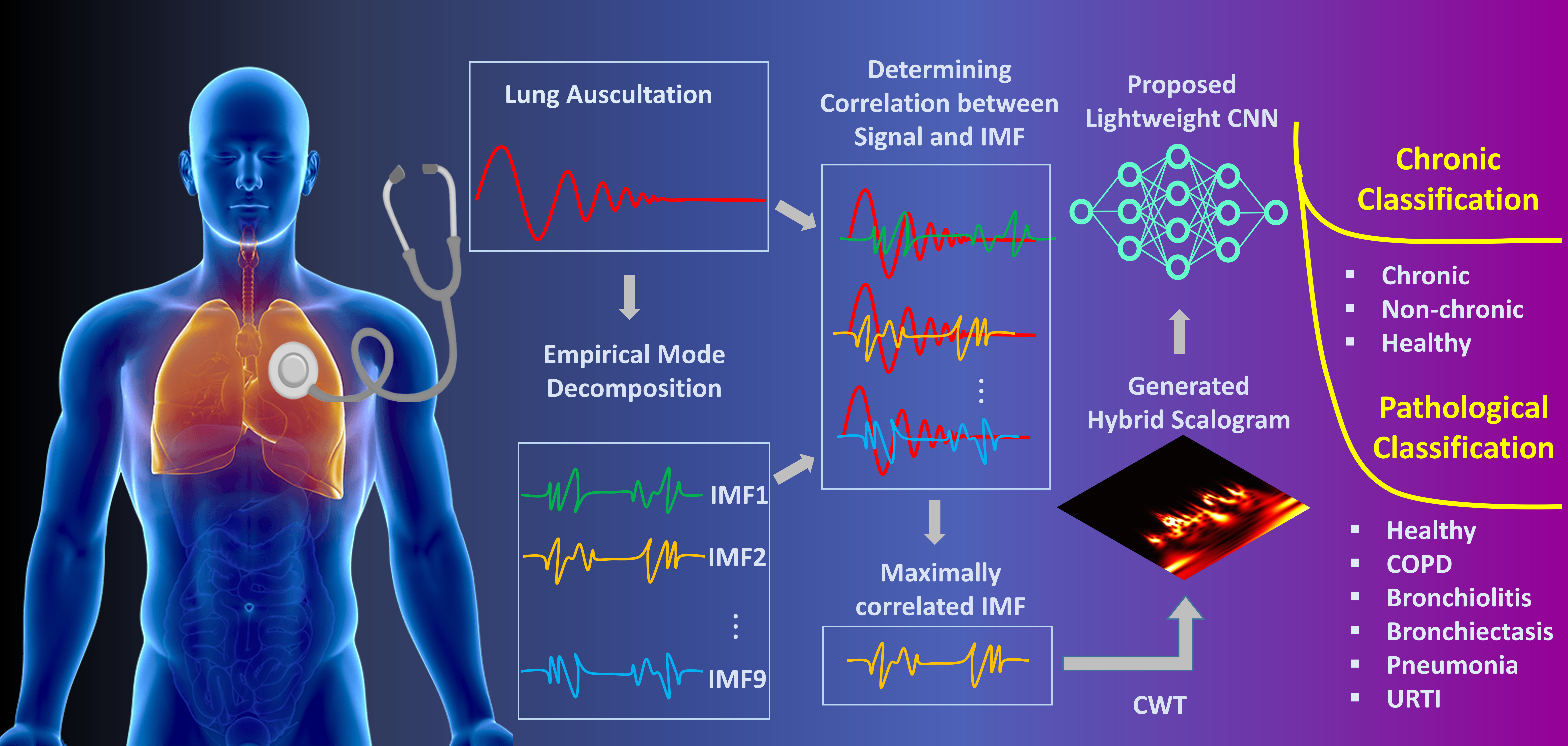A Lightweight CNN Model for Detecting Respiratory Diseases from Lung Auscultation Sounds using EMD-CWT-based Hybrid Scalogram
Listening to lung sounds through auscultation is vital in examining the respiratory system for abnormalities. Automated analysis of lung auscultation sounds can be beneficial to the health systems in low-resource settings where there is a lack of skilled physicians. In this work, we propose a lightweight convolutional neural network (CNN) architecture to classify respiratory diseases using hybrid scalogram-based features of lung sounds. The hybrid scalogram features utilize the empirical mode decomposition (EMD) and continuous wavelet transform (CWT). The proposed scheme's performance is studied using a patient independent train-validation set from the publicly available ICBHI 2017 lung sound dataset. Employing the proposed framework, weighted accuracy scores of 99.20% for ternary chronic classification and 99.05% for six-class pathological classification are achieved, which outperform well-known and much larger VGG16 in terms of accuracy by 0.52% and 1.77% respectively. The proposed CNN model also outperforms other contemporary lightweight models while being computationally comparable.
PDF Abstract